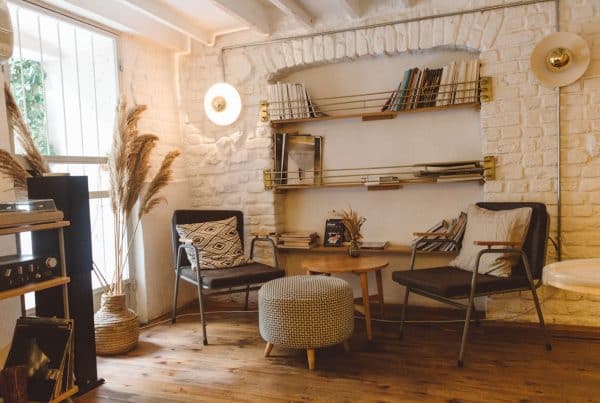How to Design Your Life by Creating Habits That Stick
Learning how to design your life may sound like a big task, but it starts with something simple: your daily habits.
The small choices you make each day are like building blocks, shaping your progress and future. Habits define who we are, and when we design them with intention, they lead to growth and fulfillment. It’s not about overnight transformation but about steady, consistent actions. Every habit you create is a step closer to living the life you truly want.
How to Design Your Life by Building Intentional Habits
The key to life design isn’t random decisions or fleeting motivation—it’s intentional habits that reflect what truly matters to you.
When you create habits with purpose, they help guide your health, relationships, career, spiritual growth, as well as your legacy building. Intentional habits align with your core values, like starting your day with gratitude if you value mindfulness or setting aside time for exercise if you prioritize physical well-being.
Imagine someone who begins by waking up 15 minutes earlier to journal or meditate. That small habit, over time, improves focus and emotional well-being, gradually creating a life filled with clarity and purpose. Designing habits with meaning transforms them into powerful tools that help build the life you want.

Why Small Changes Lead to Big Results
One of the biggest misconceptions about change is that it has to be drastic. The truth is, small changes add up to big results. This concept, often referred to as the “1% rule,” emphasizes that improving just a little each day leads to significant growth over time.
For example, drinking an extra glass of water daily seems small but improves hydration and energy levels over time. Spending 10 minutes planning your day each morning can increase productivity. Small, simple habits aren’t just easier to adopt—they’re the foundation of sustainable growth. How to design your life effectively starts with acknowledging that progress is built on these tiny, consistent steps.
How to Design Your Life: Steps to Create Habits That Stick
Identify your goals and values.
Start by asking yourself what truly matters. What do you want your life to look like in terms of health, career, relationships, or personal growth? Defining these goals ensures that the habits you create serve a larger purpose.
Start small and stay realistic.
Choose one or two habits that are simple and easy to implement. Instead of setting a goal to work out for an hour every day, start with a 10-minute walk. By starting small, you increase the likelihood of sticking to the habit long term.
Create triggers for new habits.
Link your new habits to something you already do. For example, if you want to meditate, do it right after brushing your teeth in the morning. Creating a trigger makes it easier to remember the habit and turn it into part of your routine.
Track progress and reward yourself.
Keep track of your daily wins using a journal or habit tracker. Small milestones deserve celebration, whether it’s treating yourself to a favorite snack or simply acknowledging your progress.
Be patient and embrace setbacks.
Building habits takes time, and setbacks are normal. Instead of giving up, reflect on what went wrong and get back on track. Progress, not perfection, is the goal.
The Role of Accountability and Support in Learning How to Design Your Life
Designing your life is easier when you have people cheering you on. Accountability partners or support groups can help you stay motivated. Share your goals with a trusted friend or join an online community that focuses on similar habits. Sometimes, just knowing that someone is checking in on your progress can give you the push you need.
Positive reinforcement from others also boosts your confidence, making it easier to stick with new habits and sustain them long term.
Designing Your Environment for Habit Success
Your environment plays a crucial role in habit formation. If you want your habits to succeed, design your surroundings to support them. For example, if you want to read more, place books where you can easily see them. If you want to eat healthier, fill your kitchen with nutritious options instead of junk food.
Organizing your environment to make good choices easier and bad ones harder will help reinforce your new habits. By controlling the spaces where you spend time, you’re essentially setting yourself up for success.
How to Sustain Long-Term Habits and Keep Evolving
Once you’ve built a habit, the journey doesn’t end—it evolves. Regularly reflect on your habits to ensure they still align with your goals. If you realize that a habit is no longer serving you, replace it with something more relevant to your current needs.
Growth means being flexible and adapting to change. For example, a morning exercise habit could later evolve into an evening routine if your schedule changes. Designing your life is a continuous process, and staying open to adjustments is key to long-term success.
Each Habit Is a Step Toward the Life You Want
Designing your life isn’t about making drastic changes overnight. It’s about taking small, intentional steps every day and trusting that they will lead you to where you want to be. As you build habits that reflect your values and goals, you’re creating the foundation for a life filled with purpose and fulfillment.
Start today by choosing just one habit to work on. It doesn’t have to be big—it just has to be meaningful. With patience and consistency, those small actions will grow into something much larger, shaping a life that reflects the dreams and aspirations you’ve always had.



